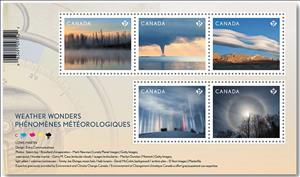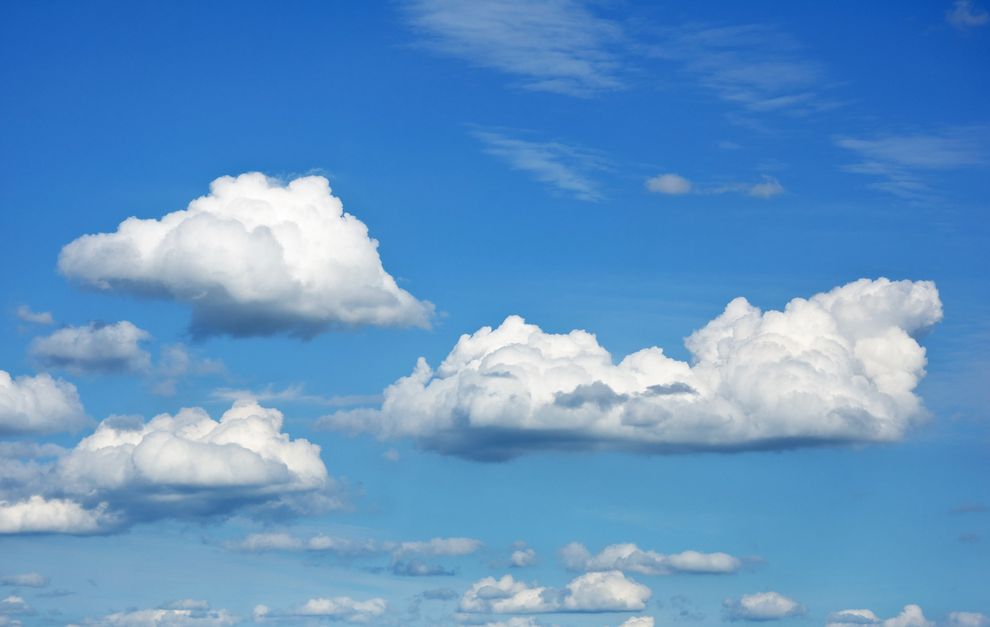Souvenir Sheet: Weather Wonders (Canada 2018)
Weather Wonders (Canada 2018)
26 July (Canada ) within release Weather Wonders goes into circulation Souvenir Sheet Weather Wonders face value P No Face Value
| Souvenir Sheet Weather Wonders in catalogues | |
|---|---|
| Michel: | Mi: CA BL278 |
Souvenir Sheet is square format.
Face value Can$4.25 on day of issue.Also in the issue Weather Wonders:
- Stamp - Water Spout face value P;
- Stamp - Lenticular Clouds face value P;
- Souvenir Sheet - Weather Wonders face value P;
- Stamp - Moon Halo face value P;
- Stamp - Steam Fog face value P;
- Stamp - Light Pillars face value P;
- Stamp - Steam Fog face value P;
- Booklet Pane - Weather Wonders face value 10*P;
- Stamp - Moon Halo face value P;
- Stamp - Light Pillars face value P;
- Stamp - Lenticular Clouds face value P;
- Stamp - Waterspout face value P;
|
Data entry completed
50%
|
|
|---|---|
| Souvenir Sheet Weather Wonders in digits | |
| Country: | Canada |
| Date: | 2018-07-26 |
| Emission: | Commemorative |
| Format: | Souvenir Sheet |
| Face Value: | P No Face Value |
Souvenir Sheet Weather Wonders it reflects the thematic directions:
In meteorology, a cloud is an aerosol consisting of a visible mass of miniature liquid droplets, frozen crystals, or other particles suspended in the atmosphere of a planetary body or similar space. Water or various other chemicals may compose the droplets and crystals. On Earth, clouds are formed as a result of saturation of the air when it is cooled to its dew point, or when it gains sufficient moisture (usually in the form of water vapor) from an adjacent source to raise the dew point to the ambient temperature.
A landscape is the visible features of an area of land, its landforms and how they integrate with natural or man-made features. A landscape includes the physical elements of geophysically defined landforms such as (ice-capped) mountains, hills, water bodies such as rivers, lakes, ponds and the sea, living elements of land cover including indigenous vegetation, human elements including different forms of land use, buildings and structures, and transitory elements such as lighting and weather conditions. Combining both their physical origins and the cultural overlay of human presence, often created over millennia, landscapes reflect a living synthesis of people and place that is vital to local and national identity. The character of a landscape helps define the self-image of the people who inhabit it and a sense of place that differentiates one region from other regions. It is the dynamic backdrop to people’s lives. Landscape can be as varied as farmland, a landscape park, or wilderness. The earth has a vast range of landscapes, including the icy landscapes of polar regions, mountainous landscapes, vast arid desert landscapes, islands and coastal landscapes, densely forested or wooded landscapes including past boreal forests and tropical rainforests, and agricultural landscapes of temperate and tropical regions.
The Moon is Earth's only natural satellite. It orbits at an average distance of 384,400 km (238,900 mi), about 30 times the diameter of Earth. Tidal forces between Earth and the Moon have over time synchronized the Moon's orbital period (lunar month) with its rotation period (lunar day) at 29.5 Earth days, causing the same side of the Moon to always face Earth. The Moon's gravitational pull – and to a lesser extent, the Sun's – are the main drivers of Earth's tides.



